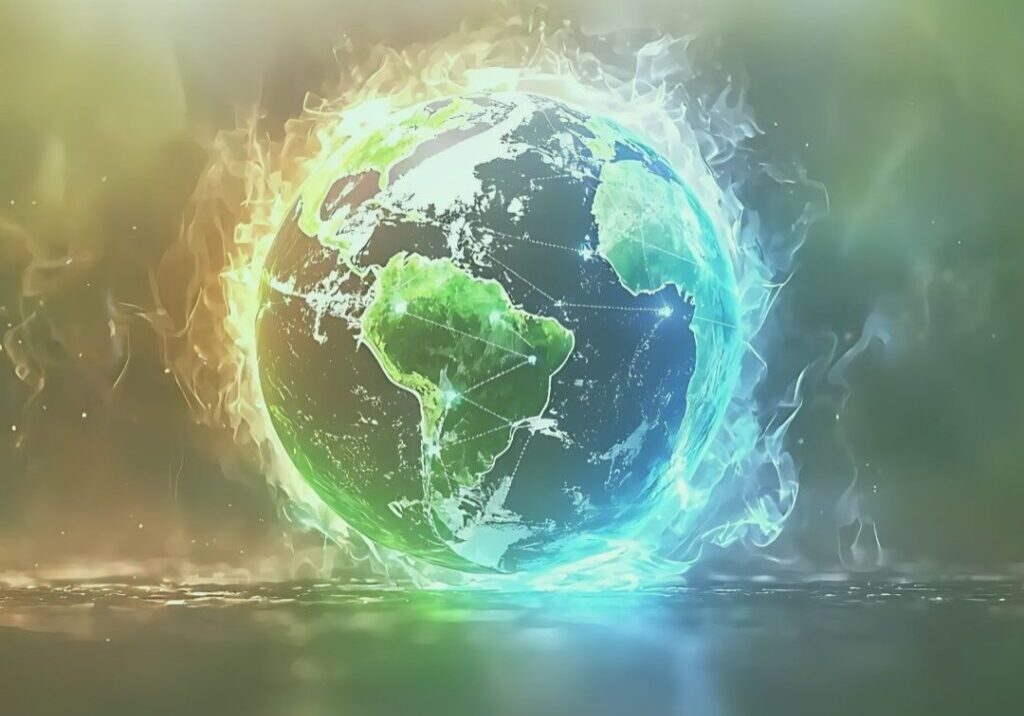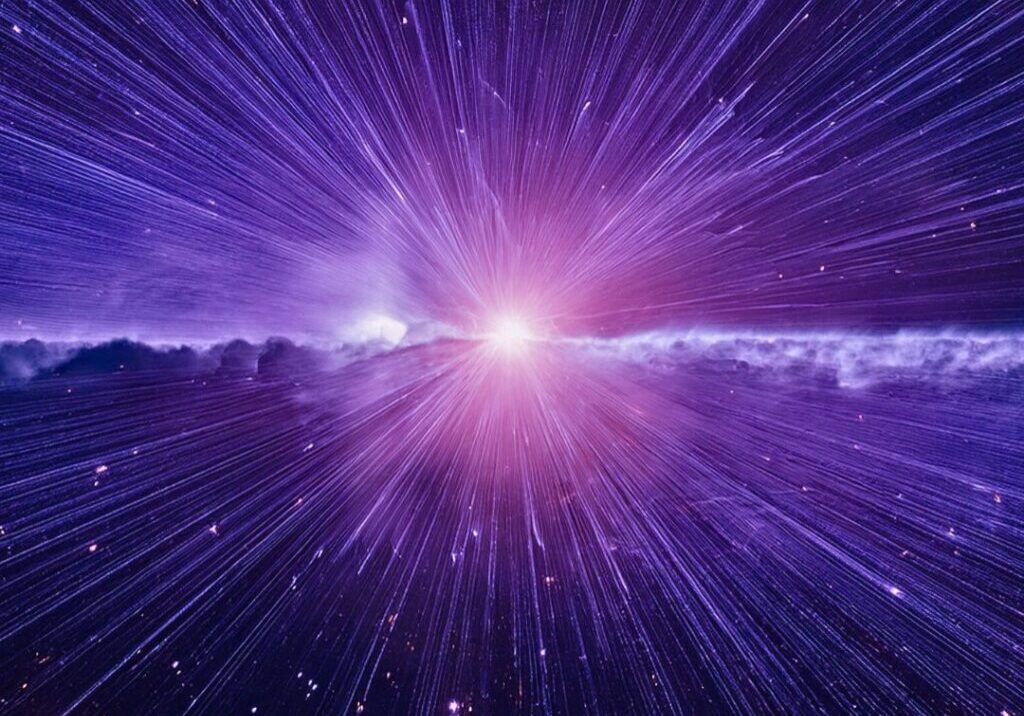Transhumanism or Ultrahumanism?
Transhumanism or Ultrahumanism?
Q: Can you explain the problem, as you see it, with the movement towards the transhuman AI vs. the transhuman Christic. I I see this as an important area to reflect upon and to be aware of as we watch the evolution of AI especially as it comes from countries which don’t have a “Christic” foundation.
 Robert Nicastro: Jesuit paleontologist Pierre Teilhard de Chardin was enamored of the development of computer technology and its capacity to guide humanity to a new level of consciousness. He affirmed the advent of technology as initiating the next phase of evolution, which he called the noosphere, or “sphere of mind.” The noosphere is a psychosocial process, linked with the biosphere, that constitutes “a living membrane stretched like a film over the lustrous surface of the star which holds us.”[1] Teilhard envisioned this newly emerging global mind as a forward movement of our spiritual energy, a maximization of consciousness, and a greater unification of the whole actualized in and through the human person who is “the ascending arrow of evolution.”[2] In other words, technology is not the endpoint of evolutionary convergence but serves as an invaluable opportunity to deepen our capacity to love and overcome separateness in all its forms. The desire to advance our awareness of this relational wholeness, to promote the consistent and universal increase in our psychic energies and so give greater birth to Christ, is to be ultrahuman.
Robert Nicastro: Jesuit paleontologist Pierre Teilhard de Chardin was enamored of the development of computer technology and its capacity to guide humanity to a new level of consciousness. He affirmed the advent of technology as initiating the next phase of evolution, which he called the noosphere, or “sphere of mind.” The noosphere is a psychosocial process, linked with the biosphere, that constitutes “a living membrane stretched like a film over the lustrous surface of the star which holds us.”[1] Teilhard envisioned this newly emerging global mind as a forward movement of our spiritual energy, a maximization of consciousness, and a greater unification of the whole actualized in and through the human person who is “the ascending arrow of evolution.”[2] In other words, technology is not the endpoint of evolutionary convergence but serves as an invaluable opportunity to deepen our capacity to love and overcome separateness in all its forms. The desire to advance our awareness of this relational wholeness, to promote the consistent and universal increase in our psychic energies and so give greater birth to Christ, is to be ultrahuman.
Transhumanism
In its inception, the notion of transhumanism was seen a source of great optimism for the human race. According to Julian Huxley, the term sought to capture humanity’s potential for realizing “new possibilities of and for [its] human nature.”[3] Unfortunately, however, transhumanists today seem more preoccupied with the situation of progress regardless of the inimical cost(s), the enhancement of the individual, and the desire to create and sustain better futures without the reliance on, or even acknowledgement of, any supernatural entity. Philosopher and futurist Max Moore writes of the movement:
Transhumanism is a philosophy of life that affirms the possibility and desirability of fundamentally improving the human condition through applied reason, especially by developing technologies to eliminate aging, death, pain, and suffering and to greatly enhance human intellectual, physical, and psychological capacities. […] It views human nature as just one point along the evolutionary pathway and believes we can learn to reshape our nature in ways we deem desirable and valuable. In a thoughtful, careful, and yet bold way, it seeks to apply technology to ourselves [in order to] transcend our physical, limited bodies.[4]
Certainly, the goal to improve our cognitive capacities and to expand the possibilities of the future is noble, good, and worthwhile. Nevertheless, the grander transhuman vision of limitless and eternal existence is ultimately realized by the manipulation of nature, the pursuit of individual enhancement over and against the flourishing of all life, and, most of all, the separation of mind and body. While many transhumanists do not necessarily despise or loathe the biological body, they do deem it a “flawed piece of engineering […] in need of a new, virtual form.”[5] The radical, dualistic move to extricate human consciousness from its biological corporeality will invariably lead to increased disintegration and disorder, as the very idea betrays “the evolutionary trend of convergence, whereby mind and matter complexify together [and develop us into] into whole persons.”[6]
Ultrahumanism
In contrast to the personal enhancement of transhumanism, Teilhard believed that our concentration should be on the acquisition of more being through interconnectivity with others. He explains:
It is not well being but a hunger for more being which, of psychological necessity, can alone preserve the thinking earth from tedium vitae […] It is upon its point (or superstructure) of spiritual concentration, and not upon its basis (or infra-structure) of material arrangement, that the equilibrium of [humanity] biologically depends.[7]
As a new stage “for the renewal of life and not a radical break with biological life,”[8] the noosphere synchronizes our individual reflections into a cosmic consciousness; it is a collective incubator of deepening personalization and unifying love. Thus, consciousness is not simply a byproduct of evolution; rather, the process of evolution is the unfolding of consciousness—God, world, and humanity—now on the highly complex and sophisticated level of the noosphere. Such convergence creates a space in which to become ultrahuman.
Teilhard defined the ultrahuman as a new type of person who has consciousness of relational wholeness and so seeks to advance that wholeness in love. The ultrahuman, in other words, recognizes its unique existence only through the interconnected mind that transcends the boundaries of religion, culture, and race. It endeavors to deepen the movement from individual reflection to co-reflection, from a fixation on parochial interests to a communal concentration on the needs of the planet. The activity of “thinking together” through the medium of technology can enhance our capacity for becoming more personalized, more unified, and more spiritual. Unlike the transhumanists, the ultrahuman embraces the pursuit of wholeness, the full bourgeoning of planetary life, the alleviation of unnecessary physical and spiritual suffering, and the call to co-creative energy of life itself: a commitment to the integral presence of love consonant with the features of an evolutionary world. In the mind of Teilhard, this is precisely the core of Christogenesis—the conscious rising of Christ at the heart of materiality—the power of the world to become personal through the power of love.[9] Teilhard writes of this interrelated convergence:
To love is to discover and complete one’s self in someone other than oneself, an act impossible of general realization on Earth so long as each can see in the neighbor no more than a closed fragment following its own course through the world. It is precisely this state of isolation that will end if we begin to discover in each other not merely the elements of one and the same thing, but of a single [energy] in search of itself.[10]
Notes:
[1] Pierre Teilhard de Chardin, The Phenomenon of Man (London: Collins, 1966), 243.
[2] Ursula King, The Spirit of One Earth: Reflection of Teilhard de Chardin and Global Spirituality (New York: Paragon House, 1989), 30.
[3] Julian Huxley, Religion Without Revelation (Westport: Greenwood Press, 1979), 195.
[4] Max More and Natasha Vita-More, eds., The Transhumanist Reader: Classical and Contemporary Essays on the Science, Technology, and Philosophy of the Human Future (Cambridge: John Wiley & Sons, Inc., 2013), 3-4.
[5] Ibid., 15.
[6] Ilia Delio, Re-Enchanting the Earth: Why AI Need Religion (New York: Orbis Books, 2020), 98.
[7] Pierre Teilhard de Chardin, The Future of Man, trans. Norman Denny (New York: Harper and Row, 1964), 317.
[8] Ibid., 146.
[9] Delio, Re-Enchanting the Earth, 184.
[10] Pierre Teilhard de Chardin, The Future of Man, trans. Norman Denny (New York: Harper and Row, 1964), 95.
 View print-friendly version
View print-friendly version
1 Comments
Related Posts

The Earth Groans, AI Grows: Who Guides the Flame?
In this critical moment of planetary history, where ecosystems collapse, artificial intelligence proliferates, and human meaning trembles on the edge of uncertainty, we are faced with a profound question: What kind…


Described by Teilhard, the “single energy in search of itself” was never given a specific name or identity, only mentioned by him as “the highest part of matter.” As to Teilhard’s vision, that single energy (singularity) is to evolve, encephalate and centrate in the ultrahuman over deep time, culminating in the Omega Point of history. In that the Christ identified himself as “the Alpha and Omega, the first and the last, the beginning and the end,” one might safely conjecture that so evolved and purified, said energy ends (Omega) where it began (Alpha), as in a circuit. As to where it began, and a clue to its ethereal substance, look no further than Genesis 1, where the word “light” is mentioned ten times, created even before the sun. Defining himself as “The Light of the World,” the Christ is that light “in whom all things consist and hold together.” In the Gospel of John, Jesus is defined as “the light that lights every man who comes into the world,” unveiling his glorified light body to the disciples on Mt. Tabor. His regenerated followers are called “children of light.” Look for the ultrahuman to be a light being, bearer and worker, different not in degree but in kind from his ancestors, a new phylum — homo elektor. The Internet is but a modern day metaphor for same, an electronic forerunner/Baptist come to announce his coming king.